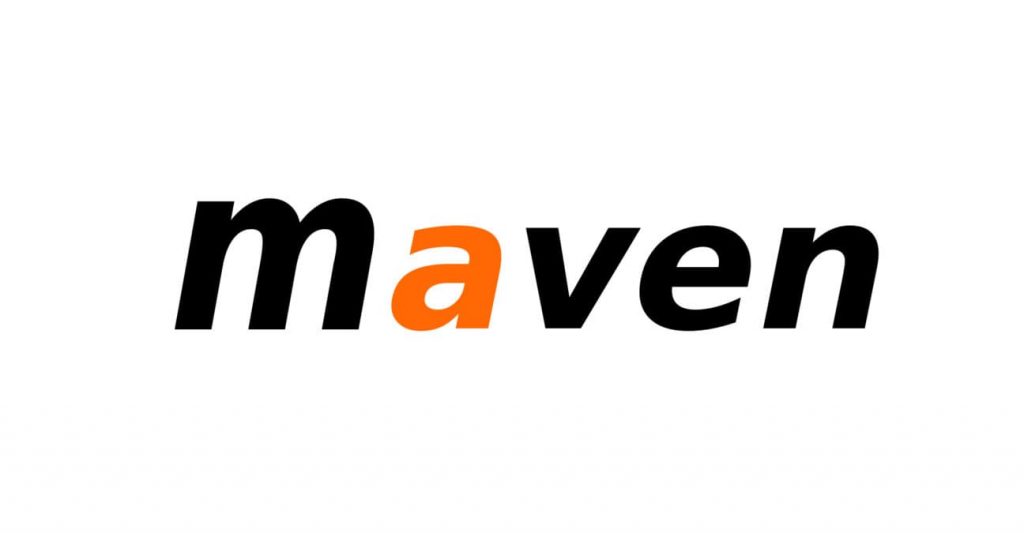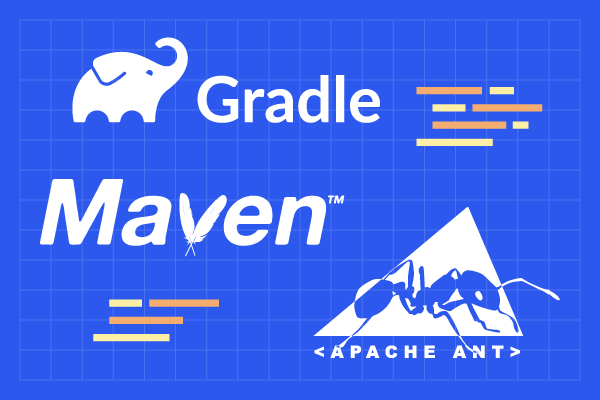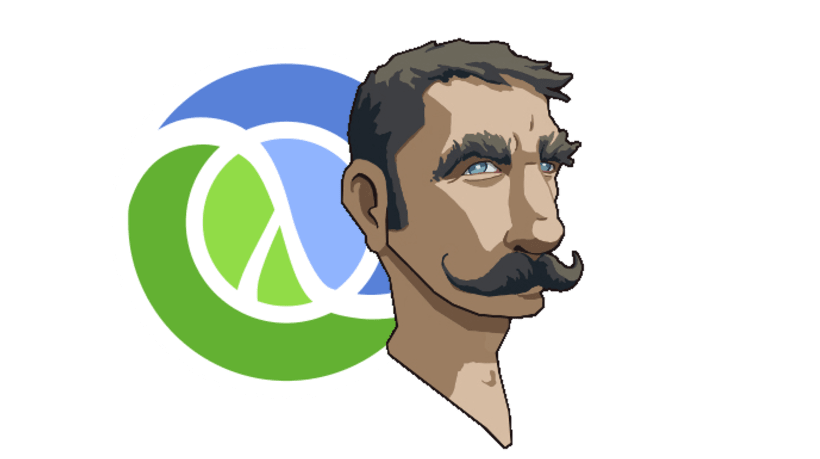5 Most Popular Java Build Tools Developers Must Know
- TECHVIFY Team
- 0 Comments
In the vast world of Java development, the tools we employ play a pivotal role in defining the efficiency and quality of our projects. Among these tools, Java build tools stand out as the backstage magicians, turning raw code into robust, ready-to-run applications. Whether you’re a seasoned developer or a novice starting your Java journey, this guide promises insights that can significantly elevate your development process.
I. What Are Java Build Tools?
Java build tools are the unsung heroes of the Java development world. They are utilities that automate converting source code into executable applications and libraries. While Java’s ‘javac’ compiler translates Java source files into bytecode, build tools take this further by handling everything from dependency management to project automation. In essence, they eliminate the need for manual intervention in various stages of the development lifecycle, thus making a developer’s life much more straightforward.
In this guide, we venture deeper into the roles of these tools, their benefits, and how to choose the right one for your project.
II. Benefits of Using Java Build Tools
| Automation and Efficiency | Automates repetitive tasks, allowing developers to concentrate on coding, and enhances process speed and efficiency. |
| Improved Collaboration | Promotes teamwork through standard project structures and easy sharing of project configurations, reducing setup errors. |
| Dependency Management | Manages external libraries and frameworks, preventing compatibility and version conflict issues. |
| Simplified Build and Deployment | Streamlines the build and deployment processes, reducing errors and making releases smoother and more predictable. |
| Quality Assurance | Incorporates quality assurance steps into the build process to maintain high code quality and flag issues automatically. |
III. 5 Most Popular Java Build Tools for Developers
Each Java build tool has its features, pros, and cons. Developers might choose one over another based on specific project requirements, their familiarity with the tool, and the learning curve associated with each. Exploring and experimenting with different tools is advisable to find the one that fits best with your project needs.
1. Maven
Undoubtedly a front-runner in the Java build tools list, Apache Maven has been the go-to for many developers. It simplifies the build process by defining how a project is built and its dependencies through an XML file.

Outstanding Features
- Project Object Model (POM): Defines projects and their dependencies using an XML file.
- Plugins: Extends functionalities through a wide range of plugins.
- Dependency Management: Simplifies the handling of project dependencies.
- Build Life Cycles: Defines different build lifecycles to streamline the development process.
Pros
- Standardization: Offers a standardized build process, fostering collaboration.
- Vast Repository: Comes with an extensive repository of libraries and plugins.
Cons
- XML Configuration: Some find XML configuration verbose and less flexible.
- Slower Builds: Compared to some other tools, Maven can have slower build times.
2. Gradle
Gradle is a contemporary open-source tool for build automation that leverages the foundational principles of Apache Ant and Maven, delivering exceptional performance and adaptability via its DSL grounded in Groovy.

Outstanding Features
- Groovy-based DSL: Allows scriptable builds, providing more flexibility and control.
- Incremental Builds: Only rebuilds parts of a project that have changed, enhancing efficiency.
- Plugin Framework: Can extend functionalities through a variety of plugins.
Pros
- Performance: Known for high performance and speed.
- Flexibility: It provides greater flexibility than Maven, thanks to its scriptability nature.
Cons
- Learning Curve: Has a steeper learning curve, especially for developers unfamiliar with Groovy.
- Less Mature: Though popular and powerful, it is less mature than Maven.
3. Ant
Apache Ant is the most popular Java build tool that manages the tasks defined in build files using a step-by-step workflow.

Outstanding Features
- Target-based Workflow: Provides fine-grained control over the build process.
- Flexibility: Allows for creating highly customized build processes.
- Extension: Supports extension through custom Ant tasks.
Pros
- Control: Offers a great deal of control over the building process.
- Historical Adoption: Widespread use in legacy projects due to its longevity.
Cons
- Verbosity: Build files can become quite large and complex.
- Lacks Conventions: Does not impose a project structure, which can lead to non-standardized builds.
4. SBT (Simple Build Tool)
Primarily used for Scala projects, SBT is also compatible with Java and is known for its high build performance and interactive console that eases the development process.

Outstanding Features
- High Build Performance: Optimized for high performance, making it an excellent choice for large projects.
- Interactive Console: Offers real-time feedback and a user-friendly environment for executing commands.
- Cross-Build Compatibility: Supports different Scala and Java versions.
Pros
- Performance: High build performance, making it suitable for large projects.
- Interactive Development: Enhances the development experience with Interactive Console.
Cons
- Complexity: The tool is known for being complex and having a steep learning curve.
- Scala-Centric: Primarily focused on Scala, which might only partially cater to pure Java projects.
5. Leiningen
While Leiningen is mainly used for Clojure projects, it can also effectively handle Java project builds, offering straightforward setup and project management capabilities.

Outstanding Features
- Straightforward Setup: Simple setup process for new projects.
- Dependency Management: Efficiently handles project dependencies.
- Plugin System: Allows extension through plugins to add new functionalities.
Pros
- User-Friendly: Offers a straightforward and user-friendly setup process.
- Clojure Integration: Integrates seamlessly with Clojure projects.
Cons
- Java Support: Though Leiningen supports Java, it is primarily geared towards Clojure projects.
- Community: Smaller community and support compared to tools like Maven and Gradle.
Interested in build tools? See more related articles below:
IV. Guide to Choosing the Ideal Java Build Tool for Your Project
Choosing the most suitable Java build tool is pivotal to a streamlined and successful development process. It is crucial to ponder on various aspects, such as the intricate details of your project, your familiarity with the tool, and the particular functionalities that your project necessitates.
Here is a step-by-step method to assist you in choosing the right tool:
- Analyze Your Project’s Complexity: Begin by evaluating the complexity of your project. Different tools cater to projects with varying levels of intricacy. Recognizing the complexity of your project will help narrow down your options.
- Identify Required Features: List the specific features you seek in a build tool. It could be anything from incremental builds scriptable builds to a rich repository of plugins and libraries.
- Consider the Learning Curve: Not all tools are user-friendly for beginners. Keep in mind the learning curve associated with each tool. If you are open to spending time learning, then a tool with a steep learning curve but rich features could be beneficial.
- Experiment in a Sandbox Environment: Testing different tools in a sandbox environment is beneficial before settling on a tool. This testing phase will offer insights into how each tool aligns with your project needs.
- Assess the Community and Support: Opting for a tool with a strong community and support system is always advantageous. A vibrant community can be a rich resource for resolving issues and learning new tricks.
- Focus on Your Workflow: Ultimately, the best tool is the one that seamlessly integrates into your workflow and boosts your productivity. It should enhance the collaborative spirit of your team while making the development process smoother and more efficient.
Remember, there isn’t a ‘one size fits all’ solution. Your project’s unique demands will be the determining factor in your choice. With a systematic approach, as outlined above, you are on the right path to selecting a build tool that meets your expectations and project requirements.
Conclusion
In this exploration of Java build tools, we’ve delved deep into the unique landscapes of Maven, Gradle, Ant, SBT, and Leiningen. Each tool brings something special: Maven offers standardization, Gradle brings flexibility with its Groovy-based DSL, Ant gives you control, SBT promises high performance, and Leiningen shines with user-friendliness.
However, the journey doesn’t end at just identifying these tools. Choosing the one that fits seamlessly into your project is a nuanced task that requires understanding your project’s complexity, identifying necessary features, and considering the learning curve associated with each tool. It’s a personalized journey where testing in a sandbox environment can offer valuable insights.
However, choosing the right tool can be a tough task. If you find yourself wondering where to start, why not consult with the experts? TECHVIFY is here to help you with your next projects. Contact us now to get the best consultant and services.
TECHVIFY – Global AI & Software Solution Company
From Startups to Industry Leaders: TECHVIFY prioritizes results, not just deliverables. Accelerate your time to market and see ROI early with high-performing teams, AI (including GenAI) Software Solutions, and ODC (Offshore Development Center) services.
- Email: [email protected]
- Phone: (+84)24.77762.666
FAQs
What are Java build tools?
A Java build tool represents a utility designed to transform source code into executable applications, facilitating a more efficient development process through automation, dependency management, and quality assurance.
What is a build tool in Java?
Build tools in Java are software solutions that streamline the transformation of Java source code into a runnable application.





